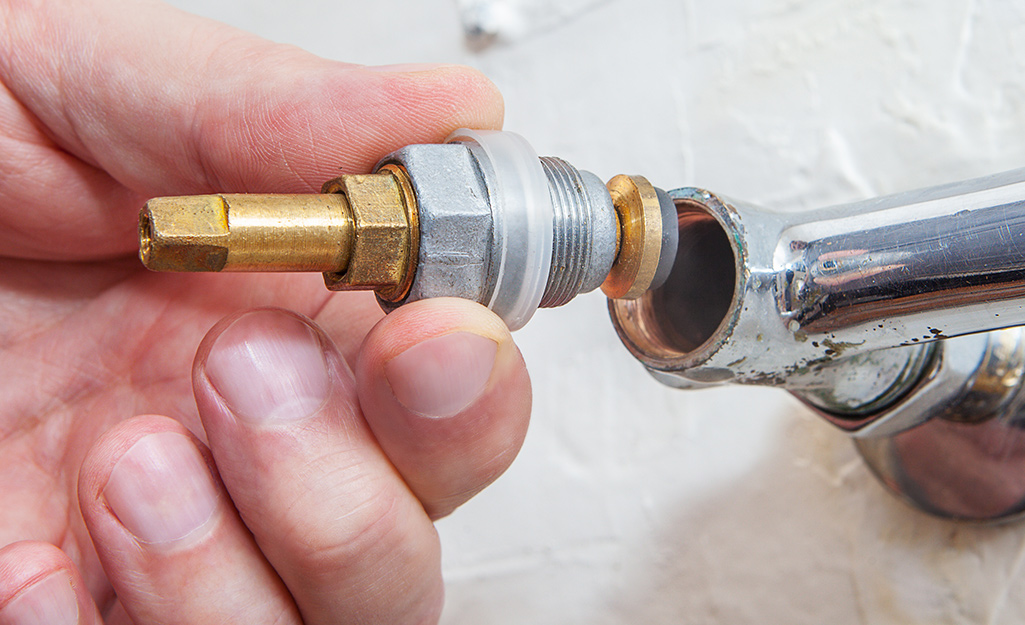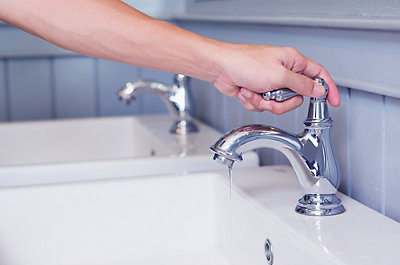Your Importance of Fixing a Dripping Faucet
Your Importance of Fixing a Dripping Faucet
Blog Article
What are your thoughts on Why It's Important to Fix Leaky Faucets?

Trickling faucets may look like a small inconvenience, however their influence goes beyond just the nuisance of the audio. From wasting water to incurring unneeded economic prices and health and wellness dangers, overlooking a dripping faucet can result in different repercussions. In this post, we'll look into why it's critical to resolve this usual household problem quickly and efficiently.
Waste of Water
Environmental Impact
Dripping taps add dramatically to water waste. According to the Environmental Protection Agency (EPA), a single faucet trickling at one drip per secondly can squander more than 3,000 gallons of water per year. This not just stress water resources but additionally impacts ecosystems and wild animals based on them.
Financial Costs
Raised Water Expenses
Beyond the ecological effect, trickling faucets can blow up water expenses considerably. The collected wastage gradually translates into greater utility costs, which can have been prevented with prompt repairs.
Potential Residential Property Damages
Moreover, prolonged leaking can result in harm to components and surface areas surrounding the faucet. Water buildup can cause staining, deterioration, and even structural concerns if left unattended, leading to extra repair work costs.
Wellness Issues
Mold and Mold Growth
The consistent existence of wetness from a leaking tap produces an excellent setting for mold and mildew and mold growth. These fungi not just compromise indoor air top quality yet likewise position health threats, especially for individuals with respiratory problems or allergies.
Waterborne Diseases
Stationary water in leaking taps can come to be a breeding place for bacteria and various other microorganisms, raising the danger of waterborne diseases. Pollutants such as Legionella bacteria prosper in stagnant water, possibly leading to severe diseases when consumed or inhaled.
DIY vs. Specialist Repair work
Benefits and drawbacks of DIY Repair Service
While some might attempt to repair a trickling tap themselves, DIY repair services feature their own set of difficulties. Without appropriate expertise and devices, do it yourself attempts can exacerbate the issue or result in incomplete repair services, extending the issue.
Advantages of Working With a Specialist Plumber
Working with a specialist plumber makes certain that the underlying source of the trickling tap is attended to successfully. Plumbing technicians possess the competence and devices to diagnose and repair tap problems effectively, saving time and decreasing the danger of further damages.
Step-by-Step Guide to Fixing a Dripping Tap
Tools Called for
Before attempting to take care of a dripping faucet, collect the necessary devices, including a flexible wrench, screwdrivers, replacement components (such as washers or cartridges), and plumber's tape.
Usual Faucet Issues and Their Solutions
Recognize the sort of tap and the details issue triggering the drip. Typical issues consist of damaged washers, corroded shutoff seats, or faulty O-rings. Refer to supplier instructions or on the internet tutorials for detailed advice on repairs.
Preventive Measures
Routine Upkeep Tips
To stop trickling faucets, perform routine maintenance such as cleaning up aerators, checking for leakages, and changing damaged components promptly. Additionally, consider installing water-saving devices or upgrading to more reliable components.
Value of Prompt Fixes
Attending to leaking faucets as soon as they're seen protects against additional water wastefulness and prospective damage, inevitably conserving both water and money in the future.
Effect On Building Value
Perception of Well-Maintained Building
Preserving a home in good condition, including attending to maintenance problems like trickling faucets, boosts its perceived worth and desirability among possible buyers or occupants.
Impact on Resale Value
Qualities with well-maintained plumbing fixtures, consisting of taps, command greater resale worths in the property market. Addressing leaking faucets can add to a favorable impact throughout residential or commercial property assessments and arrangements.
Ecological Duty
Specific Payment to Preservation
Taking duty for dealing with dripping faucets aligns with broader initiatives towards water preservation and ecological sustainability. Every individual's actions jointly make a substantial influence on protecting valuable resources.
Lasting Living Practices
By focusing on punctual fixings and embracing water-saving practices, people add to sustainable living techniques that benefit both present and future generations.
Verdict
Dealing with a dripping tap goes beyond simple convenience; it's a crucial step toward preserving water, reducing financial costs, and safeguarding health and home. Whether via DIY repair work or professional support, taking action to repair leaking faucets is a small yet impactful way to promote responsible stewardship of sources and add to a much healthier, a lot more lasting future.
How to Fix a Leaky Faucet: Step-by-Step Repair Guide
A leaky faucet may seem like a simple annoyance, but if it's not fixed promptly, that leak could cost hundreds to potentially thousands. From water damage to mold, mildew, and high water bills, even a tiny leak can be catastrophic if left unattended. Damage like this can even affect the overall value of your home, so it's important to take the right approach for leaky faucet repair. You may need the help of a plumber in some cases, but we've got a few tips you can try on how to fix a leaky faucet before calling the pros.
Four Faucet Types
When you're learning how to fix a leaky faucet, the first step is knowing what kind of faucet you're working with! There are four common types.
Cartridge Faucets
Cartridge faucets come in one- or two-handled varieties. In one-handled cartridge faucets, hot and cold water combines in a single cartridge. In the two-handled versions, hot and cold water are controlled separately and mixed in the faucet.
Ball Faucets
Ball faucets have a single lever you push up and down to adjust the pressure and rotate to change the temperature. A slotted metal ball controls the amount of water allowed into the spout.
Compression Washer Faucets
They're the oldest type of faucet, but they're still used in many homes — especially older ones. Compression faucets have two separate handles that, when turned, raise or lower the washer that seals a water valve. This valve stops water from flowing through the faucet when it is turned off.
Disc Faucets
Disc faucets rarely need to be repaired due to their maintenance-free design. The water flow is controlled by two discs — the upper one raises and lowers against a fixed lower disc, creating a watertight seal. If your disc faucet starts leaking, you may need to replace the seals or clean residue buildup from the inlets.
Fixing a Leaky Faucet
Step 1: Turn Off the Water
Whether you're learning how to fix a leaky bathtub faucet or how to fix a leaky kitchen faucet, always turn off the water supply to your working area when you're fixing a leak. The last thing you want is a flood added to your list of things to fix.
Look for the shutoff valves below your sink or around the tub and turn them clockwise to stop the water flow. If your faucet doesn't have shutoff valves, you may need to turn off the water for the whole house. Check to make sure it's off by turning the faucet on. If nothing comes out, you're ready to start the repair.
Step 2: Take Apart the Faucet
How you disassemble your faucet depends on the type of fixture you have. You can use a flathead screwdriver to remove the caps on top of the handle or handles for cartridge and compression faucets. Inside, you should see handle screws. Unscrew these with a screwdriver to remove the handle.
Disc- and ball-style faucets will typically have an inlet screw near the handle, and removing that will reveal the interior of the faucet.
Detach the Valve Stem
For cartridge- and compression-style faucets, you'll see the inner valve stem or cartridge once you remove the faucet handles. If you have a compression faucet, unscrew the brass valve stem. If you have a cartridge faucet, pull out the cartridge. If your cartridge has been in place for a while, it may require some tools or extra force to remove it due to mineral deposits.
Examine and Replace Parts
Once you've removed the parts, check them out to confirm what needs to be replaced. You may see corroded rubber washers, O-rings, stems, or cartridges. On a ball-style faucet, check the seats and springs for damage.
If you need to repair a leaky disc faucet, check the inlet and seals on the lower disc.
Once you determine what parts must be replaced, visit your local hardware store. Bring the damaged parts with you to ensure you can purchase the correct components to replace them.
Clean Valves and Faucet Cavity
If you've removed a stem or cartridge, you may notice mineral buildup in the faucet's threads. Use white vinegar to clean the valve seat by soaking it for a few minutes, then scrub it away with a soft toothbrush and rinse with warm water. You can also clean the interior of the faucet in the same way.
Reassemble the Faucet
Once your faucet is cleaned and the required parts have been replaced, it's time to reassemble it. Put the pieces back together and slowly turn the water supply back on. Doing this slowly is crucial because too much initial water pressure can damage the new hardware you've just installed.
https://homewarranty.firstam.com/blog/how-to-fix-leaky-faucet

I'm very involved in and I'm hoping you enjoyed reading the entire piece. Appreciated our posting? Please share it. Let somebody else check it out. We take joy in your readership.
Report this page